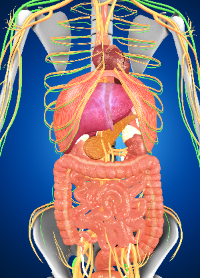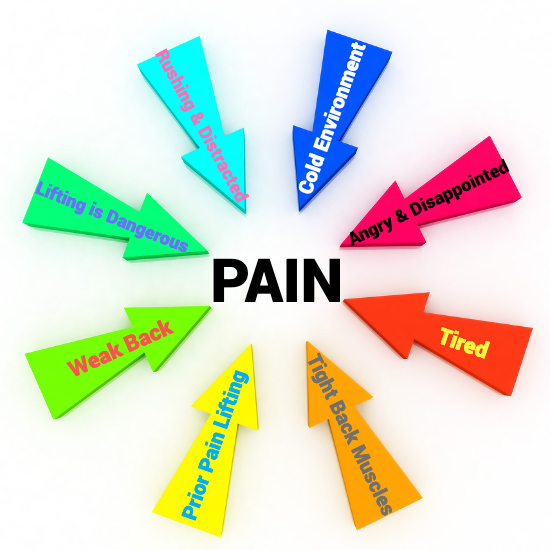The Perfect Storm of Chronic Pain
Mar 22, 2023
A perfect storm, like chronic pain, emerges when numerous factors combine simultaneously. Merriam-Webster defines “perfect storm” as “a critical or disastrous situation created by a powerful concurrence of factors.” Let’s substitute chronic pain into this definition: chronic pain is created by a powerful concurrence of factors. Does that sound right to you? Think about it.
For many of us, this definition does not fit with our current concept of chronic pain. Most of us attribute persisting pain to something we did. Our thinking goes like this: “I did x [insert your activity of choice], and as a result of this action, I am in pain.” This scenario follows a linear pattern. First, I do something. Then, I hurt. One thing follows another, a simple cause and effect equation. If only chronic pain were simple! The truth is that chronic pain is extremely complex. It actually follows an emergent pattern. Did I lose you? Consider this . . .
Have you ever said to yourself or someone else, “My pain just came out of nowhere!” Or perhaps you’ve expressed frustration that you are hurting despite not knowing why. You can’t think of anything you did to cause the pain. I know I have. And, I have struggled to understand this myself until I learned the difference between linear and emergent patterns. Let me explain.
Linear Patterns
 Many things in life and in our bodies follow a linear pattern. Linear patterns adhere to a logical step-by-step progression. To illustrate, think about digestion: this is a great example of a linear process in the body. Food goes into the mouth, and then a cascade of pre-determined processes follows as the food flows through the digestive system, ending with waste products being expelled out the other end (Moseley and Butler, 2017).
Many things in life and in our bodies follow a linear pattern. Linear patterns adhere to a logical step-by-step progression. To illustrate, think about digestion: this is a great example of a linear process in the body. Food goes into the mouth, and then a cascade of pre-determined processes follows as the food flows through the digestive system, ending with waste products being expelled out the other end (Moseley and Butler, 2017).
Although I didn’t realize it before, when a client tells me their pain suddenly appeared or didn’t have a triggering event, they are attributing a linear pattern to their pain. The model they have adopted is that pain is the consequence of something they did. Hence, an example might be that when the client lifted groceries out of the trunk of their car, they experienced pain in their back. In a linear fashion, one thing follows the other. In this example, it seems like lifting the bag of groceries was the triggering event that resulted in the back pain. The client believes they have caused the pain through this single action. But, as I have recently learned, pain doesn’t work this way. To understand pain, we need to understand emergent patterns. Read on!
Emergent Patterns
Emergent patterns can happen spontaneously when many items converge. Sound like the definition of a perfect storm? Likewise, they can dissipate as mysteriously. Yahoo! This means pain can disappear as quickly as it appears.
 Consider a traffic jam. All the drivers are going along, minding their own business, traveling from here to there. Suddenly and surprisingly, all of these independently moving cars come together at the same location, causing a traffic jam (Moseley and Butler, 2017). Darn, now I’m going to be late! Then, without warning, all of the cars start moving, traffic flows easily, and you relax as you realize you’re going to be on time for your appointment. Emergent patterns depend on many items coalescing at the same time. This is how chronic pain works!
Consider a traffic jam. All the drivers are going along, minding their own business, traveling from here to there. Suddenly and surprisingly, all of these independently moving cars come together at the same location, causing a traffic jam (Moseley and Butler, 2017). Darn, now I’m going to be late! Then, without warning, all of the cars start moving, traffic flows easily, and you relax as you realize you’re going to be on time for your appointment. Emergent patterns depend on many items coalescing at the same time. This is how chronic pain works!
Let’s consider what items may be converging to create pain in our lifting example above. Pain science teaches us that there are external and internal inputs to the pain experience (Gifford, 1998). External inputs come from our body tissues and environment, while internal inputs are stored in the brain and include beliefs, past experiences, knowledge, culture, and more. Adding all of the inputs (emergent items) into the lifting example gives us a broader picture of the event. These include such things as a cold environment, rushing because you are late, tired from a poor night of sleep, a previous experience of pain while doing the same activity, tight back muscles, feeling angry and disappointed because you have overscheduled yourself again, distracted attention, and the beliefs that your back is weak and that lifting is dangerous.
 |
The figure shows these multiple inputs converging in the pain experience. It is up to the brain to determine if protection via pain is needed. Read more about how Your Brain Interprets Your Pain.
Although it may be tempting to attribute a linear pattern to this incident, lifting groceries=back pain, it is actually the coalescence of all of these factors that resulted in the pain. Essentially, the client’s brain decided there was a significant threat to the person and created pain to prevent further harm . . . not to mention that the bag of groceries was not heavy enough to cause sufficient tissue damage.
This is why you can experience pain that seems to come out of nowhere. Although you didn’t do anything, which is a requirement of the linear model, there were adequate inputs to prompt protection through pain. Perhaps you were thinking and focusing on your pain more. Maybe you were becoming increasingly sad as you realized how long you have been in pain and all that you were missing. You might have even been catastrophizing about worst case scenarios and contemplating that you will never recover. And, while you were in this negative mental space, you had an argument with a spouse or child, received bad news, or lost your keys. The perfect storm of chronic pain can be triggered through numerous and simultaneous non-physical inputs.
Conclusion
Despite knowing that many items contribute to the pain experience and even being told by clients that they notice an increase in pain with stress, lack of sleep, and dehydration, I didn’t have a good model to explain the connection. Now I do! And so do you!
Moseley and Butler (2017) note that research has found that most people don’t have a good understanding of emergent patterns. Consequently, we default to using linear patterns to explain life and body processes, including chronic pain. Now you can see how this is a mistake. Linear patterns are not appropriate to explain chronic pain. It takes a multitude of items joining together to create persisting pain--which means there are many treatment options available to reduce it. This is exciting news!
Get started today by taking a moment NOW to draw your own input arrows toward your pain. Choose one, the easiest one, to change. Then, notice as your pain starts to decrease.
Moseley, GL & Butler, DS 2017, Explain Pain Supercharged, Noigroup Publications, Adelaide, Australia.
Gifford, L 1998, ‘Pain, the Tissues and the Nervous System: A conceptual model, Physiotherapy, vol. 84, no.1, pp. 27-36.
Stay connected with news and updates!
Join our mailing list to receive the latest news and updates from me.
Don't worry, your information will not be shared.
We hate SPAM. We will never sell your information, for any reason.

